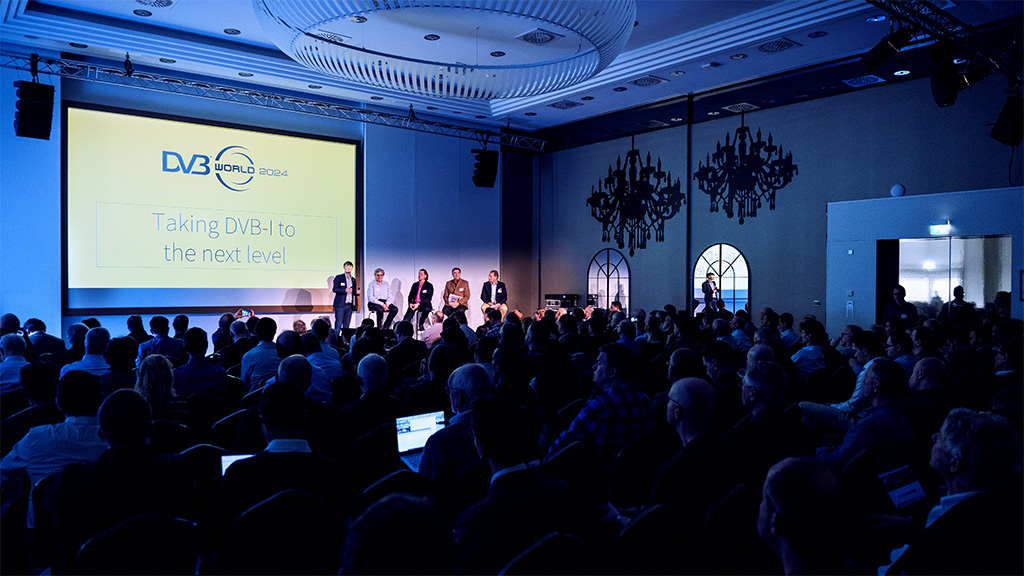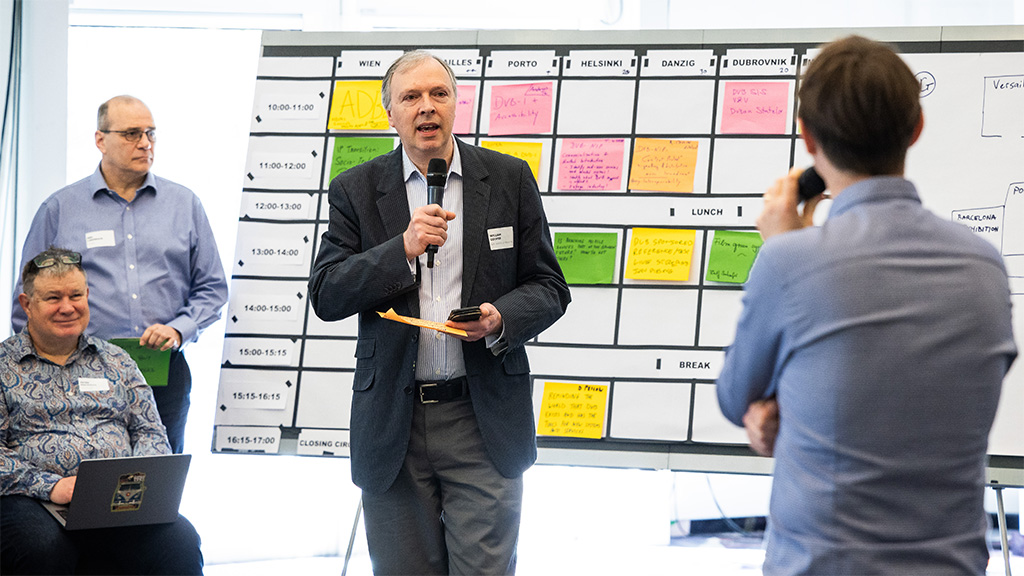DVB-I was the hot topic once again at DVB World 2024 in Munich. Among other topics of discussion was ultra-high-definition services on digital terrestrial television. With spectrum secured for at least another decade in Europe, two major markets are launching 4K UHD services on their terrestrial networks, ready for the Olympics. The United Kingdom, which has led the way on DTT, is not one of them. British broadcasters were notable by their absence. It seems that they have made Freely their test bed, and they are going to lie in it.
DVB-I is an open standard to enable online service discovery. It effectively supplements or replaces the service information that is transmitted in broadcast networks and allows devices and displays that are connected to the internet to access announced instances of services over any network.

Trial services are underway in Italy and Germany. Both were on show in live demonstrations. Further trials are proposed in other territories. The United Kingdom is not one of them, although public service media providers are promoting their own proprietary Freely platform that will do something similar and is based on the same basic technologies.
A breakout ‘unconference’ session discussed the similarities and differences between an operator app, as proposed by Freely, and an open platform based on DVB-I. In practice they have much in common, and the latest version of HbbTV embraces DVB-I for service discovery. As a result, manufacturers may support both approaches, although whether they will want to hand over the user interface to a service provider will remain a strategic question.
Japanese public broadcaster NHK discussed a proposed approach to content discovery that looks remarkably like DVB-I. This could be used in conjunction with ISDB standards in Japan. There is also interest in DVB-I in association with the latest ATSC standards. This suggests the prospect of a universal standard for television metadata, which would be a world first. The biggest challenge to that might be the association with the DVB name.
Thomas Stockhammer of Qualcomm, one of the original proponents of DVB-I, showed how 5G mobile networks can also use DVB-I for service discovery. Together with Rohde & Schwarz and German broadcasters ARD and ZDF they showed the first standards-conforming integration of 5G broadcast in a DVB-I service framework on a commercial smartphone.
Another breakout session led by the DTG from the United Kingdom discussed the need for a collective vision or roadmap to manage the transition to transmission over internet protocol networks, both fixed and wireless. Without a considered approach there is the risk of further market fragmentation and an erosion of universal access to services.
There was also discussion led by the Service List Registry of the role of regulation and the use of specifications like DVB-I service lists to support appropriate prominence and attributable provenance for media services, particularly those identified by regulators of being of general interest or public value.

While DVB-I was the hot topic, there was also talk about DVB-NIP. Not to be confused with DVB-I, which is a metadata standard, DVB-NIP is all about using native Internet Protocol packets for broadcast transmission. While the benefits of this might not be immediately obvious, it allows efficient broadcast transmission of file-based media. That could include file-based fragments of streaming media or even magazines in PDF format, as a live satellite trial from SES demonstrated.
Showing that there is still life in traditional terrestrial transmissions, France and Spain are both launching ultra-high-definition services nationally.
With nearly 32 million television homes in France, over 60% have telco television services, but over 45% use digital terrestrial television, known there as TNT, 19% of them exclusively. Of those, just over half report that they are satisfied with terrestrial reception and do not wish to change. The main television in 60% of homes in France is estimated to be capable of UHD and this is expected to rise to 70% by the end of 2024.
In time for the 2024 Olympics in Paris, UHD services are being rolled out across France, with 3840×2160 resolution at 50 progressive frames per second, high-dynamic range, wide colour gamut, and next generation audio.
In Spain, with 19.3 million television homes, digital terrestrial television adoption remains at over 70%.
UHD services will be available in both DVB-T and DVB-T2 multiplexes, covering 99% and 60% of the population respectively. These will also offer 2160p50 images in high-dynamic range with wide colour gamut and next generation audio.
All of which makes the United Kingdom, one of the first countries in Europe to launch a digital terrestrial television service, look rather backward in comparison. Although this DVB World had one its highest ever attendances, with delegates from around the world, it was notable that there were no representatives from the BBC or ITV on the delegate list.
